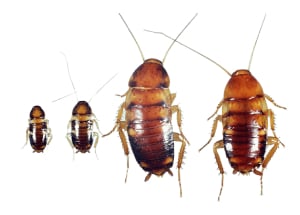It is an irritating sight to switch on your lights and see tiny roaches scamper across the floor, kitchen tops, and furniture to safety. Cockroach babies are a common and huge predicament to many households, as they multiply very fast under conducive conditions.
When it comes to baby cockroach size, different species look different. For example, the American baby roaches being the biggest of them all are around 0.8 centimeters in length, and they grow up to four centimeters long as adults.
To eliminate these pests, one needs to take into account various factors, including their lifecycle, ideal breeding conditions, and also eating habits. In this article, I want to cover these points and provide you with some pictures of baby cockroaches according to their species.
The Cockroach Lifecycle
Typically, cockroaches live for about six to eighteen months, depending on the species and environmental conditions, such as temperature. It is vital to understand the growth cycle of roaches to get rid of them before they reproduce and become an acute problem. Just as with some other pests, cockroaches have a three-phased life cycle.
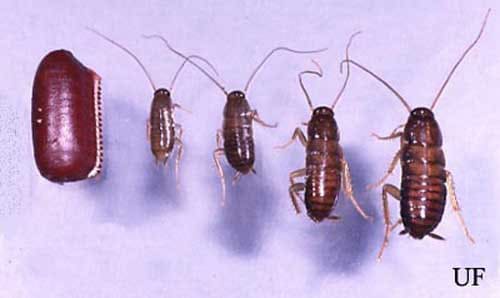
Egg
The initial stage of a roach’s life is the egg one. Adult roaches lay approximately fifty eggs at once, and the number can decrease, depending on the temperature and humidity conditions of the environment. Isolated spots that are somewhat warm and suitable humid conditions are the ideal places where cockroaches may lay and hide their eggs. Some of such locations include:
- Stores and basements
- Furniture joints
- Ceilings and walls
- Inside electrical appliances
- Bathrooms and under sinks
On average, the eggs take about two months, under the right climatic conditions, to hatch. The hatching period also depends on the species. In a conducive environment with high temperatures, the eggs tend to develop quickly and hatch within a shorter span. Most cockroaches have multiple laying phases in their lifetimes, and it explains the fast growth of infestations.
Nymph
Hatching of the eggs marks the beginning of the nymph stage. It is the phase when roaches develop the adult features bit by bit with each molt. The newborn cockroach is often without fully developed external body parts. In this stage, the nymphs shed their skin several times, and, with each molt, they grow bigger.
It is during this stage that these pests are most vulnerable, especially right after each molting. It is because their new skin is sensitive after they shed off the old one. Also, it is in this phase that the nymphs undergo coloration, depending on the species.
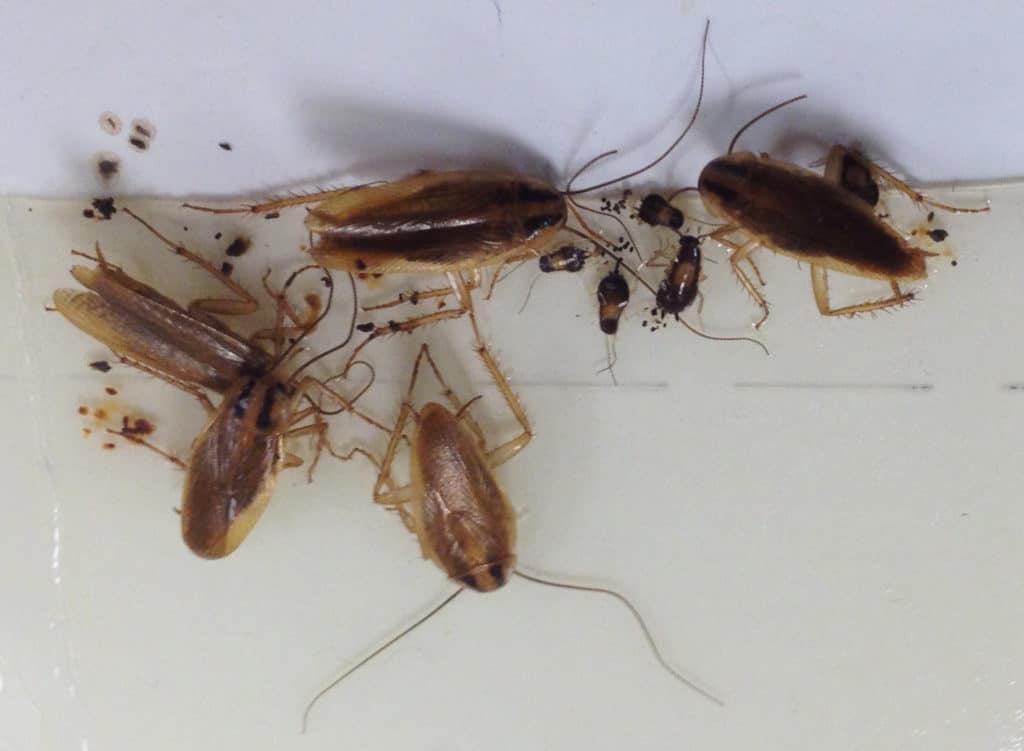
Do baby cockroaches fly?
No, as mostly, baby roaches do not have fully-developed wings and, therefore, are not in a position to fly.
Their flying ability is realized as they mature into adulthood. Once the nymphs have developed into adults, their negative impact can’t be overlooked. These pests are notorious for not only causing physical damage on properties, but they may also pose a significant health risk by spreading bacteria. This phase typically spans for about one to three months.
Adult
Once the nymphs have developed into adults, they spend most of their time resting and breeding. They will only come out when it’s dark to look for food. Noteworthy, they can go for weeks without eating after having a good meal. Some species, such as the American roach, have wings that allow them to fly. Females can lay fertilized eggs all their lives after a single mating process.

Diverse Appearances of Different Baby Roaches
Like many others, you might be wondering, what do baby cockroaches look like? The physical appearance of the young roaches differs depending on the species so that some baby roaches are much bigger than others. Once an egg hatches and the nymph emerges, usually, it is white and undergoes coloration to a brown pigment.
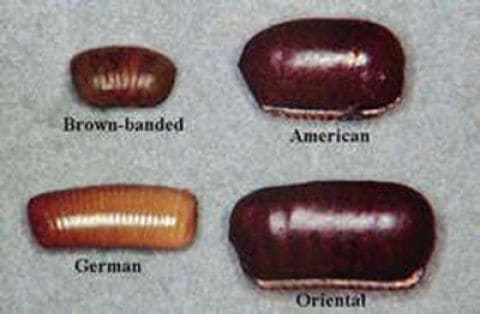
As I have mentioned before, most baby roaches don’t have wings. Though there are over 2,500 cockroach species in the world, there are common ones that tend to live in residential areas. Here is a list of the species you may spot at home:
- American
- Brown-banded
- German
- Oriental
- Dusky
- Lesser
How small are baby cockroaches?
Once hatched, some nymphs, such as a baby German cockroach, are typically small, measuring about 0.3 centimeters in length. Unlike adults, baby roaches are not overly cautious. Therefore, you are likely to come across several of them in your kitchen during the day. Here’s an image of a German roach nymph:
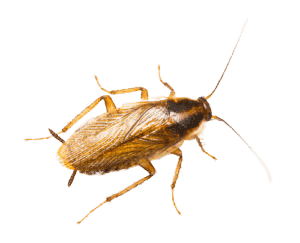
As for the baby American cockroach, it is usually a little bigger than its German and Oriental counterparts, measuring about 0.8 centimeters. The picture below shows American baby roach images in various growth stages:
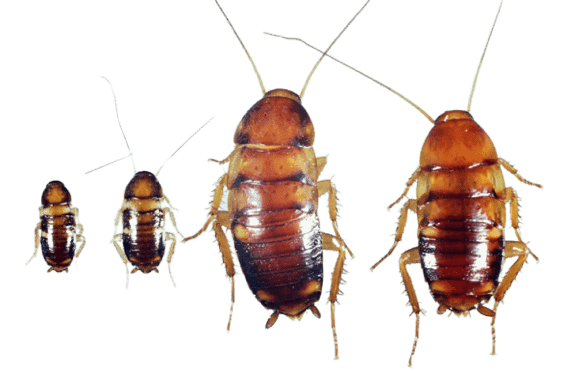
Conducive Conditions for Breeding of Roaches
Similar to any other living thing, cockroaches need a specific set of environmental conditions. The moment a few adult cockroaches enter your house and find the appropriate conditions will be the onset of breeding.
The first factor is conducive temperatures. Typically, these pests will do so well at standard room temperature with tolerance to temperatures slightly below that. Most species are found within the equatorial and tropical regions, and it evidences their temperature preferences. Too much heat or low freezing temperatures are not ideal for their breeding and growth.
Also, roaches require the right humidity conditions for them to thrive. Though they do not need their surroundings to be overly wet, these pests love damp surfaces. It explains why infestations occur in bathrooms, basements, kitchens, and other places, such as forest floors.
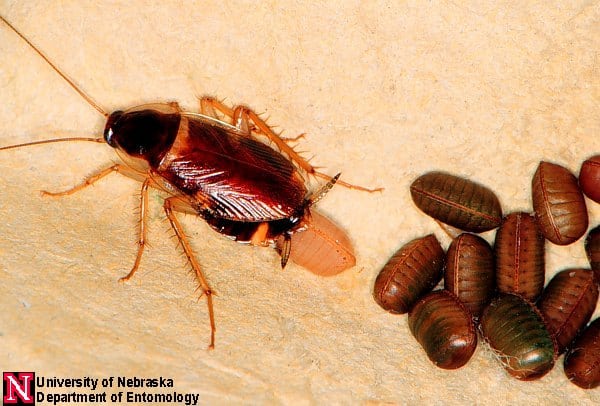
Although not a primary factor, roaches also do well in places not exposed to too much light. It is because they are somewhat conscious of the threat that stares at them when they are fully exposed.
When checking for roaches at your place, look in hard-to-reach areas, below sinks, along furniture joints, spaces in the walls, and similar places. Additionally, food is a vital factor for any living thing. Thus, cockroaches will go where there’s something to feed on. In households, these pests primarily feed on food scraps and, in the absence of these, decaying organic substances, such as smaller pests and books.
What Are Strategies for Eliminating Baby Roaches?
For many, baby roaches are disgusting and depict a huge problem that calls for immediate attention. The rapid rate at which they breed and multiply will see that cockroaches are all over your house if you don’t deal with the problem early enough. Many individuals do not know how to get rid of baby roaches and prevent further appearance. Here are several cockroach control strategies one can employ:
- Use of gel baits;
- Anti-pest sprays;
- Cockroach traps;
- Use of organic repellents.
The use of cockroach gels is one of the most effective elimination methods around. Gels are easy to apply, and their effectiveness averagely spans one week. They are suitable for use on surfaces, such as furniture, under sinks, and on the walls. You will need to apply several streaks on a targeted surface two to five centimeters apart.
There are also anti-pest cockroach sprays that are known for immediate effectiveness. They are great for eliminating young roaches. Moreover, such products are perfect for hard-to-reach areas, such as cracks on walls.
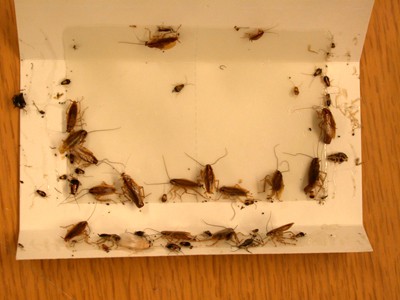
Cockroach traps are cubic or cuboid in shape with several openings. Most of these traps have poisonous substances inside. When using them, you need to place them strategically in the breeding zones of cockroaches to ensure effective results. It is because you want as many roaches as possible to enter the trap.
Finally, for individuals who are not for chemical products, other options involve the use of organic homemade repellents. Worth mentioning, such repellents are not very effective in killing roaches but come in handy in preventing other species from entering the house. Such solutions include vinegar repellent, catnip, and garlic.
Ways to Secure Your Home from Roaches
After getting rid of roaches from your home, how can one prevent another infestation from occurring? If you are seeing baby roaches after extermination, that means there are still conditions conducive for breeding cockroaches in your house. To get rid of them for good, you need to eliminate all the factors that fostered the first infestation.
The first things to take into consideration are water leakages, sanitary conditions, and lighting. Regular cleaning is essential to keep all types of pests away. Frequently check and clean your store, shelves, basement, closet, and garage. As for leakages, check all places for any dampness and identify where the water is coming from. Seeing baby roaches in the bathroom is an indicator of some leakages you are not aware of.
You can seal leakages by applying epoxy putty, using tightening joints, and making necessary replacements. Additionally, cracks should be sealed off as well, as there are not only breeding zones but also entry points of other roaches into the house. There are many products available that are handy in sealing cracks, including crack fillers and patches.
Introducing proper lighting is another strategy that will help in keeping roaches away. Also, you need to collect and dispose of all the food scraps right as you see them. Baby roaches in the kitchen indicate poor storage of foodstuffs or poor waste management. Accumulated kitchen waste is a major factor that attracts cockroaches and many other insects, such as flies. With these precaution measures, you can be sure of keeping roaches at bay.
Be Done with Roaches Forever
Roaches are a threat to human health, as they facilitate the spreading of bacteria. You can even get food poisoning if roaches invade your kitchen. After looking at the various factors that facilitate the infestation of cockroaches, you now know that it is vital to undertake regular cleaning and check for the presence of cracks on walls.
If you have many items, such as books and clothes, stored away, you might consider frequently checking them, as they are excellent breeding zones for roaches. Additionally, proper drainage is of the essence because these pests like damp surfaces. Finally, ensure there’s good lighting in your house to keep off roaches.
Have you spotted cockroaches in your house? If yes, what type of treatment are you going to apply? Or maybe, you have already used some? Share your stories in the comment section below.
Also read:
- Do Cockroaches Bite
- Bugs That Look Like Cockroaches but Aren’t
- Roach Exterminator Cost
- Cockroach Eggs
- Cockroach Poop
References:
- American cockroach (Kathryn A. Barbara, University of Florida):
http://entnemdept.ufl.edu/creatures/urban/roaches/american_cockroach.htm - Cockroaches (University of Minnesota Extension):
https://extension.umn.edu/insects-infest-homes/cockroaches - Cockroaches (Department of Entomology, University of Nebraska-Lincoln):
https://entomology.unl.edu/images/cockroaches

